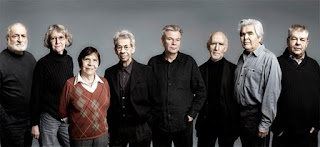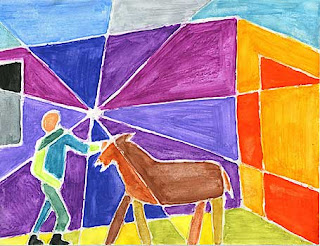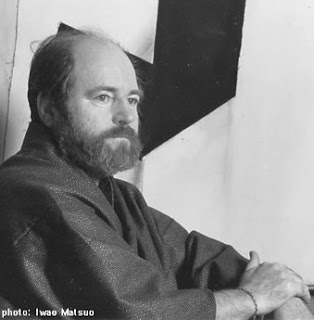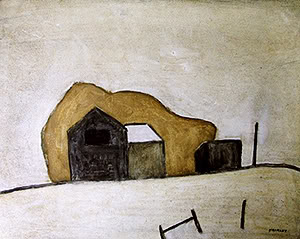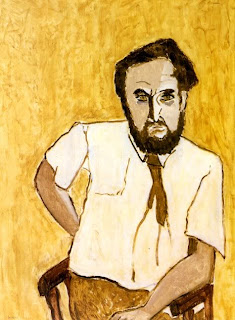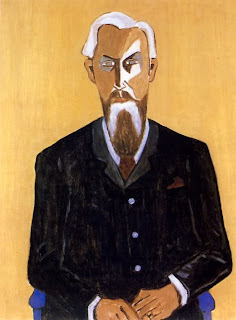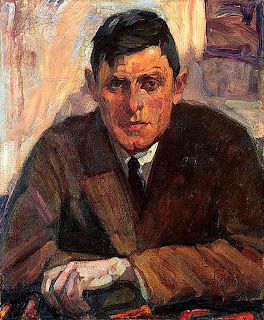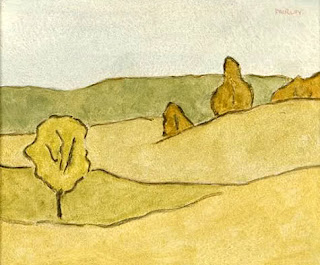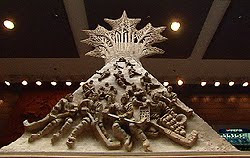
Articles were being written about him in magazines and major dailies, and the CBC carried a feature about him, but still, Sommer recalls, “no good Toronto dealer showed the slightest interest in his work”.
In 1977, though, Sommer piqued the interest of Toronto gallery owner Marianne Friedland and she drove the 40 miles to Georgetown to see Fairley’s latest exhibition there. Impressed, she not only arranged a show at her gallery for that December, she used her “clever sales expertise” to turn it into “an extraordinary success”.
Sommer provides an excellent summation of Fairley’s work.
“How important was Barker as a painter? I have never been able to decide if he was a painter (that is, a human being who lives with his eyes) or if he was an intelligent man with strong opinions about art who became a painter because he disapproved of the direction painting was taking.
“Barker fervently argued that abstract painting was wallpaper. This is nonsense, of course. For my generation abstract painting has been the great eye-opener. All of my most profound visual experiences have been in front of paintings by Kandinsky and Mondrian and Pollock and Motherwell. We can’t all have been in a trance or under the influence of brainwashing.
“It turned almost into a bit of a riot when eager purchasers ordered paintings before the show, with the result that all the paintings were sold before the gallery opened its door … Landscapes that had sold for $250 at our gallery (not exactly peanuts in the early 1970s) sold for $450 and more, and a year later, at his second exhibition at Marianne Friedland’s gallery, his small landscapes sold for $1,000 and more.
“It was a neat triumph of marketing and a happy, long-for vindication for Barker.”
Somewhat less happy was Sommer, who had to sit back as Friedland claimed all the credit for “discovering” Barker Fairley.
“‘The artist who became famous at 90′ was the tenor of all write-ups from then on, and he became, in the last years of his life, a living legend, an oddity.
“He did not like it. That he was finally accepted as a painter, that he enjoyed, and the money he did not mind either. But that his long painting career, from the ’30s to the ’80s, was sacrificed for the sake of a marketing slogan irked him no end.”

“Barker Fairley always said that he never gave a thought to painting until he met JEH MacDonald. He liked the man, and accordingly he liked what he painted. In that way Barker was led to art and soon became a spokesman for the whole Group.
“The truth is that he knew little about abstract painting because he hardly looked at it. Besides the Group of Seven and ’30s painters like Comfort and Schaefer, he knew few painters … Barker’s way of painting was so singular that no further development nor elaboration was possible …
“Barker Fairley was a product of the enlightenment. His ’sanity’ was the most striking thing about him. He had trained his mind on Goethe, the most sane of all the German writers … Barker’s objection was that abstract anything is ‘irrational’ … There it was, the accusation Goethe had hurled at Heinrich von Kleist when the writer had sent him his play ‘Penthesilea’. The olympian attitude is impressive, of course, but it denies an awful lot of our humanity, far too much to be comfortable with …
“He was active until he was almost a hundred years old. His ambition was to reach this magic number, but in the end he did not quite make it. I remember that he suddenly got old and frail.
“The last time I saw him, only a few short months before he died, I took him out in his wheelchair. He had hung a few of his paintings on the walls of the shop where he and Nan bought their bread. He wanted me to see the place and I pushed him up to Harbord Street and into the shop. On the way he confessed that he was tired of life.”
Fairley and his second wife Nan had a summer house here. He painted hundreds of canvases in the area.
THE WALDORF INCIDENT
His first wife, Margaret, died in 1967 or ‘68. She’d been dean of women at the University of Alberta, where she met Fairley but she gave up the position when they married in 1913 and moved to Toronto. Two decades later they returned to England and Margaret became active with a Marxist group.
Back in Canada by 1936, she joined the Communist Party, and later she compiled a socialist literary anthology called “The Spirit of Canadian Democracy”.
In 1949 Barker was invited to several American and British universities to speak at commemorations of Goethe’s birth bicentenary. While he was at Columbia University as a visiting professor that March, Margaret joined him in New York for the Cultural and Scientific Conference for World Peace being held at the Waldorf-Astoria Hotel.
The conference was organised by the left-wing National Council of Arts, Sciences and Professions and backed by Thomas Mann, Aaron Copland and Albert Einstein, but many saw it as some sort of Soviet invasion.
Secretary of State Dean Acheson called the Waldorf Conference “a sounding board for communist propaganda” and Washington denied visas to several prominent leftist foreigners. New York newspapers ran stories on commie subversion.
New York University philosopher Sidney Hook, who’d been rejected as a guest lecturer, set up a counter-conference that focused on freedom of expression. His people rallied at Madison Square Garden and then thousands of anti-communist protesters swarmed outside the Waldorf.
Inside, the opening banquet had just begun when Margaret was told there was a telephone call for her. She and Barker left their table, walked out of the hall and were seized by Immigration Service officials. They were led away, newspaper photographers grabbing the moment, and interrogated for an hour.

Fairley’s 1982 portrait of his second wife, Nan.
Barker was released, but Margaret was told to leave the US or face arrest as a threat to national security, and she boarded a train home.
The Fairleys were front-page news the next day — “actual communists” nabbed in New York.
Barker was allowed to complete his term at Columbia but, probably because he was vice president of the Canadian Council of American-Soviet Friendship, was subsequently refused admission to the US, raising the ire of university officials including its then-president Dwight Eisenhower.
Lester Pearson, Canada’s future prime minister, was in 1949 the minister of external affairs, and he ordered an investigation into the handling of Canadian citizens but stopped short of issuing any protest to Washington. He ultimately endorsed America’s “legitimate desire to strengthen its border regulations in order to hinder the tourist and convention activities of communist agents”.
The ban against Barker Fairley was permanent, but late in life he slipped across the border at Lewiston, as he said, “just for kicks”.
The “Incident” is a symopsis of an article by David Kimmel for the University of Toronto Bulletin.
The images of Fairley’s paintings in this post come from the website of Toronto’s Ingram Gallery, which now handles his work, from ArtNet.com, and, with thanks to John Sommer, from the book “Barker Fairley: Portraits” (Methuen, 1981).
Apologies to Paul for a little FA editing and omitting the Google Earth maps showing Barker Fairley's home and cottage.End of Article: From Paul Dorsey's, "House of Dali" blog.
Please click here to link to his site.
 Arctic Seals by Kannanginak Pootoogook
Arctic Seals by Kannanginak Pootoogook
